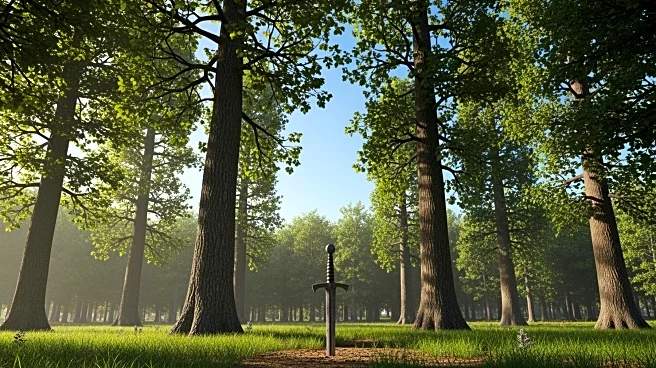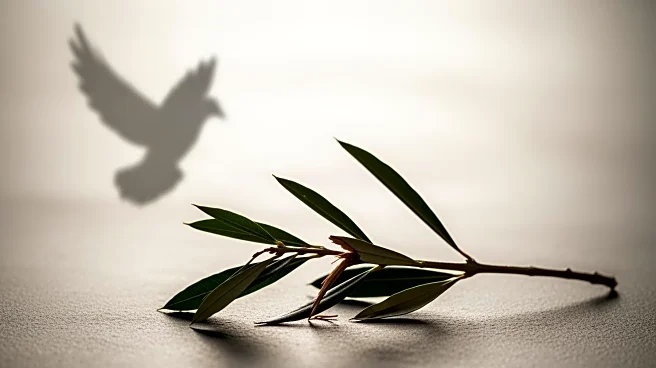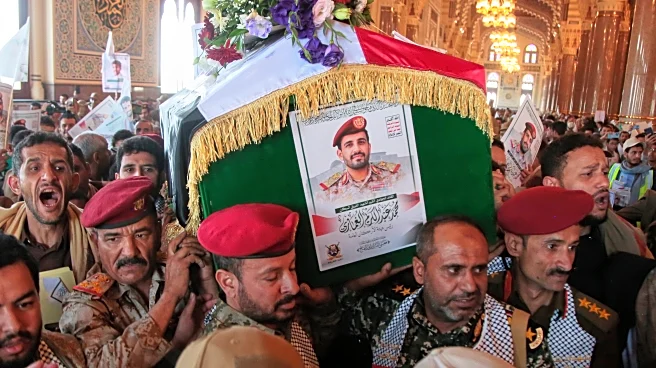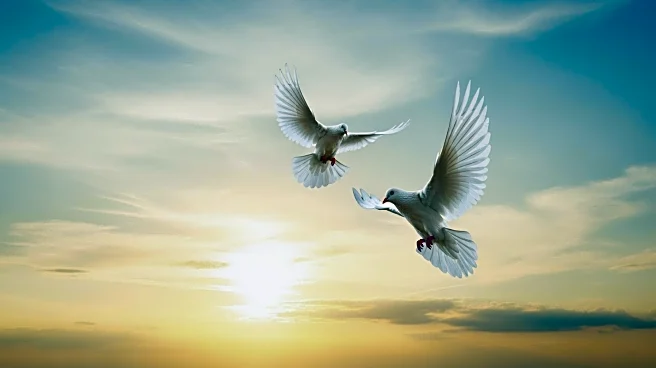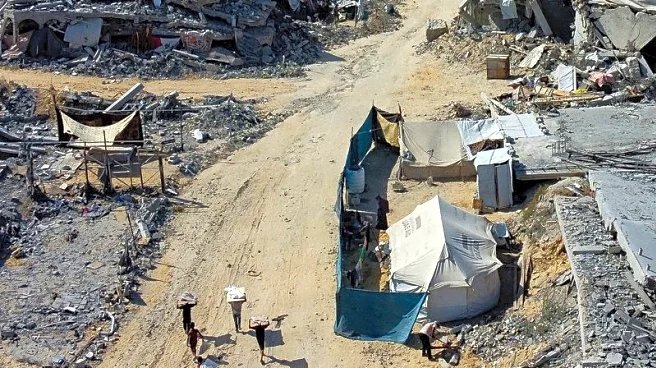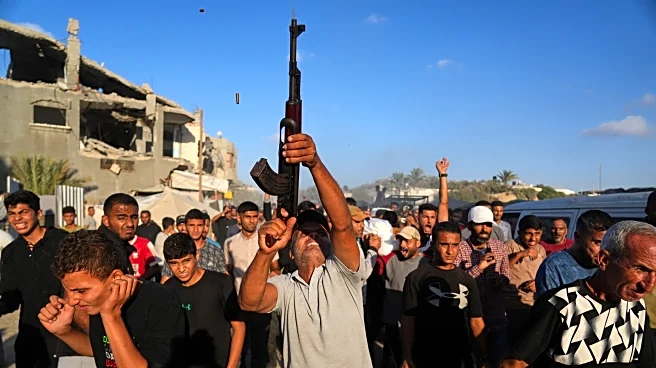What's Happening?
The 'Iron Swords Forest' was inaugurated as a memorial to the victims of the Oct. 7 attacks and subsequent conflict in Israel. Located near Kibbutz Beeri and the Nova Music Festival massacre site, the forest
features eucalyptus trees planted to honor the roughly 2,000 people killed. Families of victims, along with representatives from bereaved family organizations and security officials, participated in the ceremony. The forest, initiated by Keren Kayemeth LeIsrael-Jewish National Fund, serves as a symbol of resilience and hope. The inauguration was delayed due to ongoing conflicts, including preemptive strikes against Iran's nuclear program. Despite the current armistice, the war in Gaza is not fully over, with recent casualties reported.
Why It's Important?
The creation of the Iron Swords Forest is a poignant reminder of the human cost of conflict and the enduring impact on families and communities. It serves as a place of reflection and healing, offering a tangible connection to those lost. The forest symbolizes the resilience of the Israeli people and their commitment to rebuilding and moving forward despite adversity. It highlights the role of memorials in preserving history and fostering collective memory. The initiative underscores the importance of community support and solidarity in times of crisis.
What's Next?
Families of the remaining victims are invited to plant saplings and place markers with personal details and QR codes linking to favorite songs. The forest's name may change as the government recently renamed the conflict 'The Tekuma War.' The ongoing armistice provides an opportunity for further commemorative activities and community engagement. The forest will continue to serve as a site for remembrance and reflection, with potential for future expansions or additional memorials.
Beyond the Headlines
The forest represents a broader cultural and ethical commitment to honoring those lost in conflict. It raises questions about the role of memorials in shaping national identity and collective memory. The initiative reflects the intersection of environmental conservation and cultural heritage, as the planting of trees serves both ecological and commemorative purposes. It highlights the importance of resilience and hope in the face of tragedy, offering a model for other communities affected by conflict.


